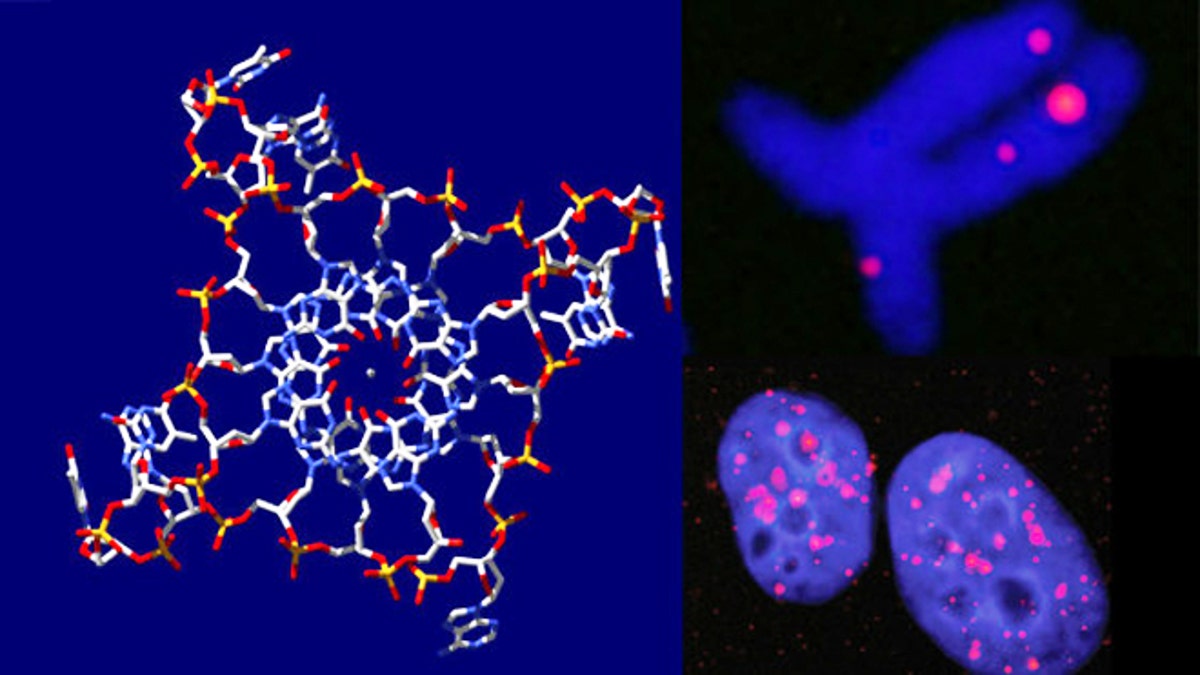
Jan. 21, 2013: Quadruplex DNA strands are seen at left, while fluorescent stains at right reveal their presence in human cell nuclei and chromosomes. (Jean-Paul Rodriguez and Giulia Biffi)
60 years after scientists first described the “double helix” shape of human DNA, the chemical code of life, scientists have discovered the first quadruple helix -- and it may help them prevent the runaway cell proliferation at the root of cancer.
"It's been sixty years since its structure was solved but work like this shows us that the story of DNA continues to twist and turn," said Julie Sharp, senior science information manager at Cancer Research UK.
[pullquote]
The research, published Monday in the science journal Nature Chemistry, shows clearly a four-stranded DNA structure that the scientists dubbed a “G-quadruplex.” The name comes from the building block guanine, one of the chemical bases that form DNA, along with adenine, cytosine, and thymine (usually abbreviated to their first letter).
By targeting these DNA oddities with synthetic molecules that trap and contain them -- preventing cells from replicating their DNA and consequently blocking cell division -- it may be possible to halt the spread of cancer, the researchers said.
"We are seeing links between trapping the quadruplexes with molecules and the ability to stop cells dividing, which is hugely exciting," said professor Shankar Balasubramanian from the University of Cambridge's Department of Chemistry and Cambridge Research Institute, whose group produced the research.
"We've come a long way in 10 years, from simple ideas to really seeing some substance in the existence and tractability of targeting these funny structures," he told the BBC.
"I'm hoping now that the pharmaceutical companies will bring this on to their radar and we can perhaps take a more serious look at whether quadruplexes are indeed therapeutically viable targets."




















